Out and About in the Arboretum
The most recent blog post is on the home page. Click on an entry below to view the full post.
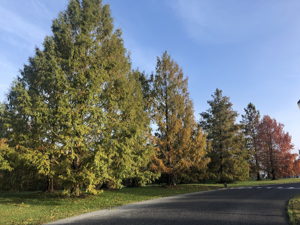
November 13, 2020 – Dawn Redwood
Each year at this time, we all enjoy the Dawn Redwood trees, Metasequoia glyptostroboides. There is a group of these magnificent trees that greet you as you enter the Lumberton Campus, and on the Medford Campus, you will find them along Medford Leas Way in the Bridlington neighborhood. This tree is one of just a few deciduous conifers, meaning they will lose all of their needles each fall. This tree is known for its rapid growth in a pyramidal shape, growing to 75-100′ tall. At this time of the season, the orange and golden colors of the needles are a special treat.
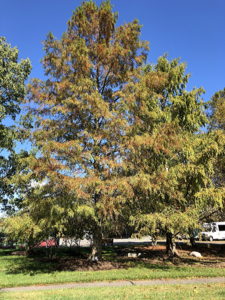
November 6, 2020 – Bald Cypress
Taxodium distichum, commonly called bald cypress, is a long-lived, pyramidal conifer, which grows 50-70′ tall. Although it looks like a needled evergreen, it is deciduous, hence the common name “bald”.
Often found in native to southern swamps in the deep South, a number of these grow in the Arboretum. At the entrance to the Lois Forrest Nature center, a group greets you at the entrance. They are especially beautiful right now as they come into the fall season.
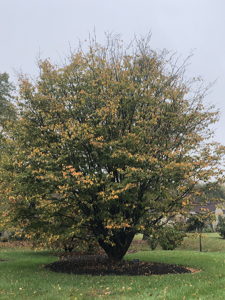
October 30, 2020 – Persian parrotia
As you are out and about in the Arboretum on the Medford Campus, traversing between Courts Six and Ten, you will see the Persian parrotia or Persian ironwood, Parrotia persica. This beauty of this upright tree is its multi-stemmed presentation, with green leaves that are currently turning various shades of red, orange and yellow. The mature bark exfoliates to patches of green, tan, and white as we get into the winter season.
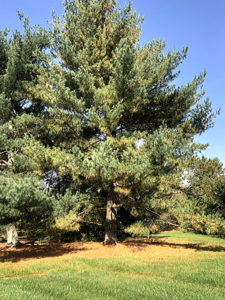
October 23, 2020 – Pine needle yellowing
Even though we call them “evergreens,” conifers such as pine, arborvitae, spruce, and cypress shed their old needles at this time of the year, with a show of yellowing or browning that at first sight can be of concern. But in fact, inner-needle drop is a normal part of the life cycle, with the rate of drop varying by species. The Eastern White Pines seem to be the most dramatic in their needle drop, giving us a new carpet of pine needle mulch around the trees.
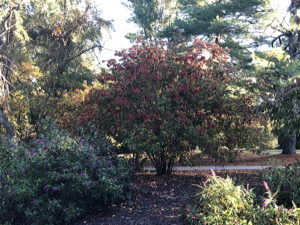
October 16, 2020 – Linden viburnum
This is a wonderful time of the year to enjoy the Viburnum dilatatum, commonly called linden viburnum. It is easily found on the Medford Campus at the intersection of Medford Leas Way and Estaugh Way by the bridge. Its leaves resemble those of the linden tree. It is native to open forests, forest margins, lowlands, and foothills in China, Korea and Japan. This deciduous shrub typically matures to 8-10’ tall and to 6-8’ wide. Spring flowers give way to bright red fruits that are now easily visible on the shrub for all to enjoy. These berries are most attractive to birds. Take a look as you are out and about in the Arboretum.
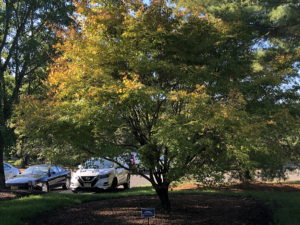
October 9, 2020 – First Colors
The peak fall color of this tree is coming, but it’s fun to highlight the process now, ahead of time, so you can enjoy the change of color as we move through the weeks ahead. The Japanese Cutleaf Maple, Acer palmatum ‘Coral Bark,’ is located near the intersection of Estaugh and Medford Leas Way on the Medford Campus. As we get towards the end of October, you will note its brilliant golden leaves. As winter comes and goes, you will enjoy the intense and brilliant color of the coral bark on the young branches.
